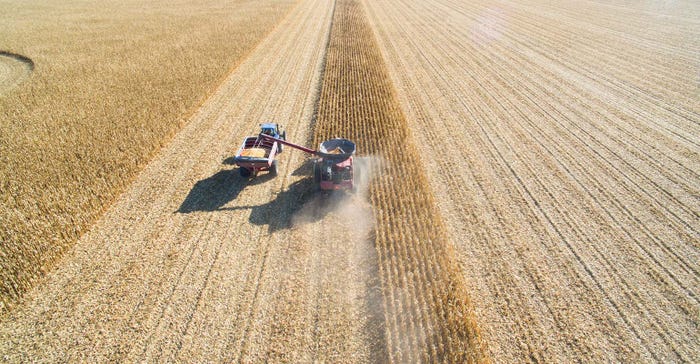USDA Crop Progress: Corn harvest progresses 13 points
Winter wheat planting progress consistent with five-year average.

Corn harvest progressed 13 points in the week ending Nov. 12, 2017, bringing the harvest to 83% complete in the latest Crop Progress report issued Monday afternoon. Soybean harvest is 93% complete, which is close to the five-year average of 95%.
Corn harvest has been behind the five-year average all season and is still 8% behind.
Harvest is less than 60% complete in only one state, Wisconsin, where 56% of the corn has been brought in. In Michigan and Pennsylvania, 69% of the corn has been harvested.
In North Carolina, on the other hand, corn harvest is complete. Other states with 10% or less of corn harvest to complete include: Tennessee, 99% complete, Texas, 95%, Kansas, 93%, Missouri and Kentucky, both 92%, and Illinois, 90%.
Soybean harvest is complete in Louisiana and Minnesota, with harvest 90% or more completed in Arkansas, Illinois, Iowa, Kansas, Mississippi, Nebraska, North Dakota, Ohio, South Dakota and Wisconsin.
In North Carolina, soybean harvest is only 54% complete. It’s 69% complete in Kentucky and 74% complete in Tennessee.
Winter wheat
Winter wheat planting, on the other hand, is progressing on schedule with 95% of the crop planted. Most of the crop – 84% – is emerged, compared to the five-year average of 83%. The crop condition declined 1 point to 54% good/excellent, from 55% last week.
“Winter wheat ratings eased last week, cutting yield potential modestly according to our production models based on condition reports,” said Bryce Knorr, Farm Futures senior grain market analyst. “Averages were around two-tenths of a bushel per acre lower. The yield based on USDA’s national rating is at 47.1 bpa, while our projection based on state-by-state conditions reports remains higher at 50.5 bpa. USDA bases its nationwide ratings on average harvested acreage for the past three years, while our state-by-state forecasts is made based on acreage we believe farmers are planting for harvest in 2018.”
While the overall ratings declined by one, the good category dropped 1 point, while the excellent category declined two points.
“Conditions regressed on the northern Plains and in the I-70 states from Kansas to Illinois,” Knorr said.
About the Author(s)
You May Also Like



